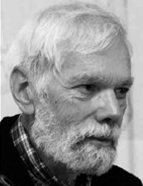

The innovation and originality of José Mattoso's work largely stem from his interdisciplinary approach and his ability to incorporate insights from other fields, such as Human Geography, Anthropology, Linguistics, and Sociology. The influences of a geographer such as Orlando Ribeiro, anthropologists such as Jorge Dias, Ernesto Veiga de Oliveira, Fernando Galhano, and Benjamim Pereira, a linguist like Luís Filipe Lindley Cintra, and a literary historian such as António José Saraiva, among other scholars from these and other scientific fields, are evident and acknowledged. Their contributions, duly connected and contextualised, served as the foundation for Mattoso’s original theories. In strictly historiographical terms, the influence of the French Annales " school " is evident, both in its emphasis on interdisciplinarity and in its pursuit of a global perspective—a "total history" that begins with a clearly formulated problem and progresses through the ability to generate answers solidly grounded in documentation and its critical interpretation. At this level, the most notable influences were those of the Belgian medievalist Léopold Genicot (who supervised Mattoso’s doctoral thesis at the Catholic University of Leuven) and the French historian Georges Duby. This direct influence is visible in Mattoso’s adopted perspective of social history and, particularly, in his studies on the history of the nobility. Duby’s theories regarding the transformation in the kinship system of the nobility in northern France between the 10th century and the mid-11th century directly influenced José Mattoso. According to Duby, there was a shift from a "cognatic family," characterised by an essentially horizontal structure without a fundamental hierarchical distinction between its members, including collateral relatives, to an "agnatic family," characterised by a vertical, lineage-based structure. In this system, male firstborns held supremacy over younger sons and women, leading to a succession regime that privileged the head of the lineage and excluded younger sons and female family members from inheritance. Applying this hypothesis to the case of Portugal , Mattoso argued that the widespread transition from the cognatic system to the agnatic system occurred in the second half of the 12th century, thus exhibiting a degree of chronological lag compared to the French phenomenon, but with similar implications to those observed by Duby. Additionally, t he methodologies adopted, incorporating the most advanced developments from abroad and even experimenting with original processes in Portugal (for example, through prosopography), would lend José Mattoso’s studies a pioneering character in the fields of Social History, Religious History, and the History of Medieval Culture and Mentalities. This feature is all the more significant given that many of the fields he explored were entirely unprecedented in Portugal. This is particularly evident in his studies of the history of mentalities, where he reveals the influence of Jacques Le Goff and Jean-Claude Schmitt, especially in his research inspired by Anthropology, focusing on death and the dead, representations of power, and the sacrament of confession.
This work is financed by national funds through FCT - Foundation for Science and Technology, I.P, in the scope of the projects UIDB/04311/2020 and UIDP/04311/2020.
